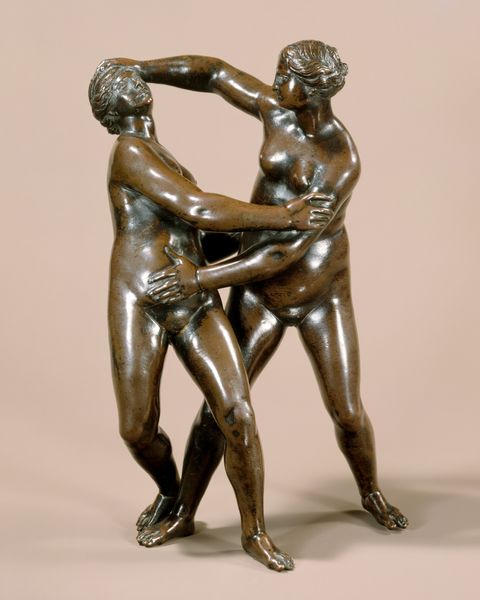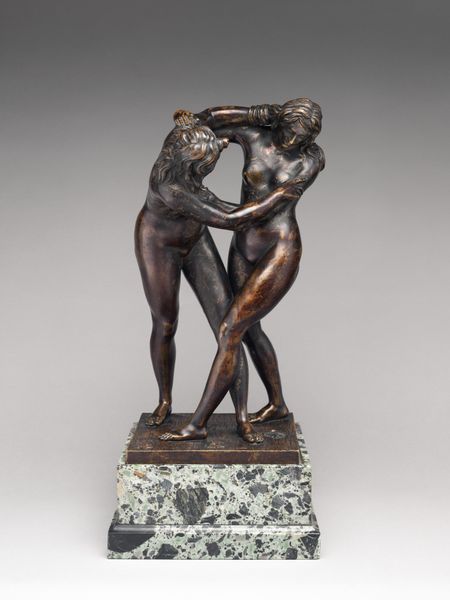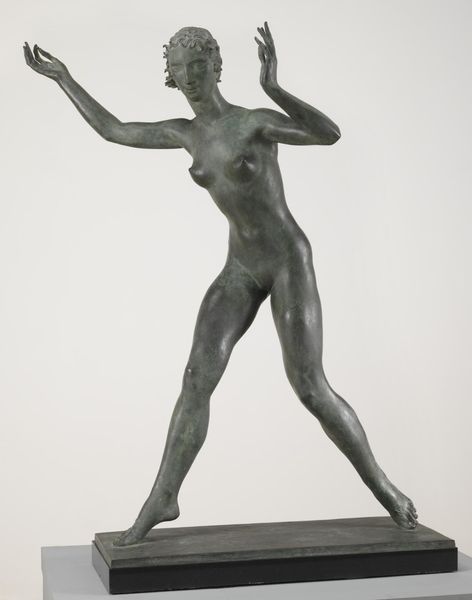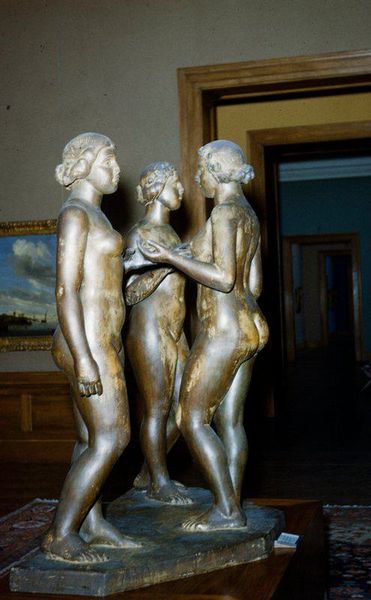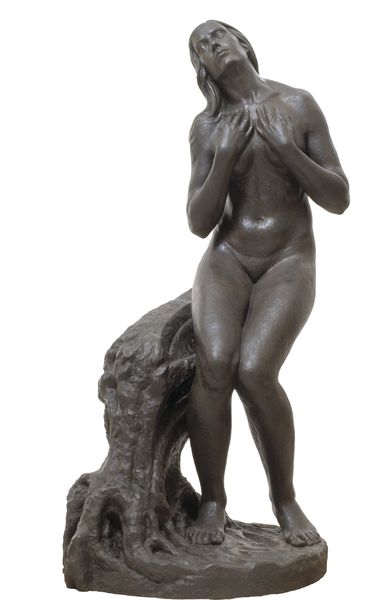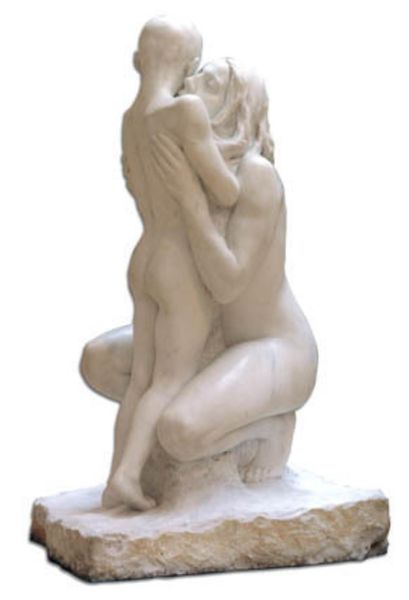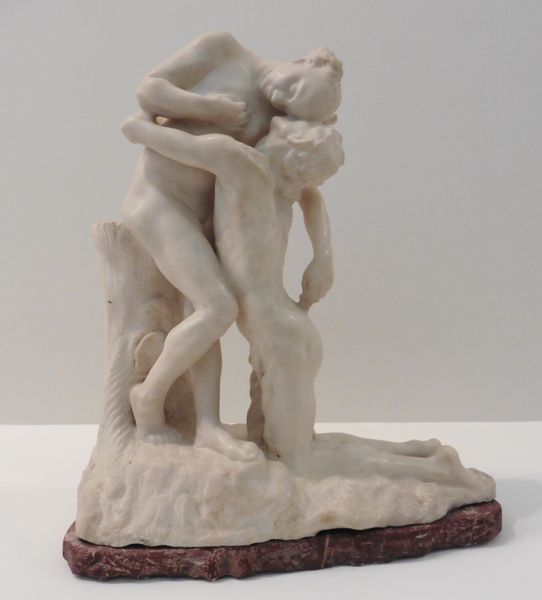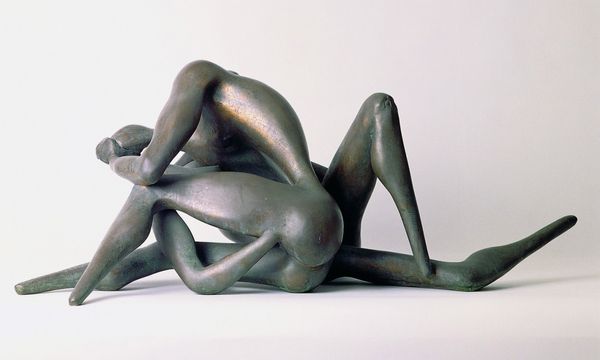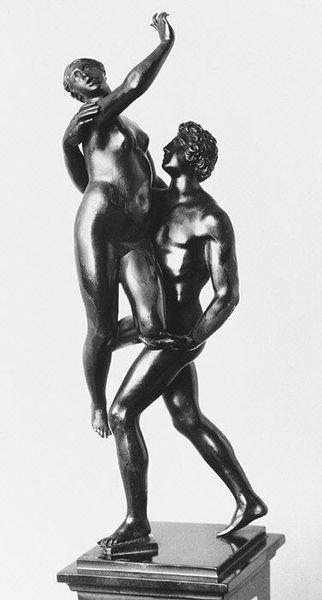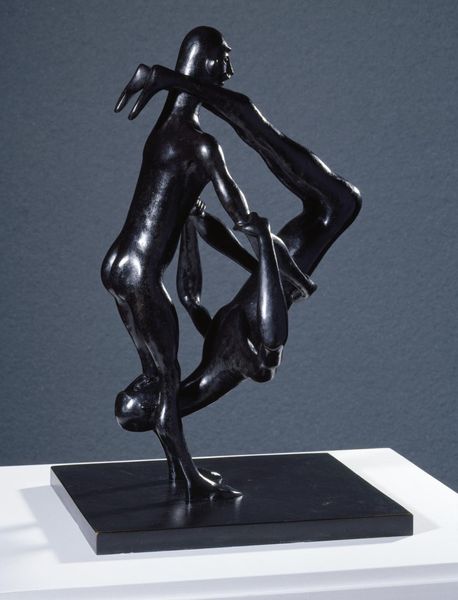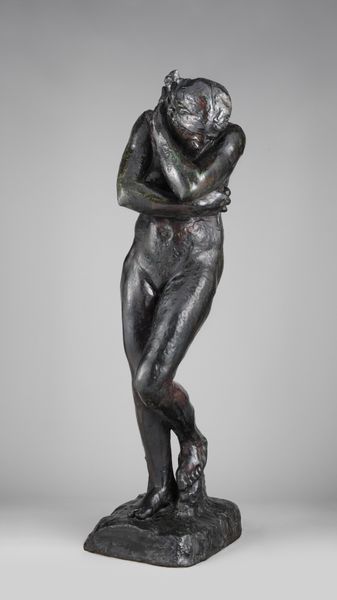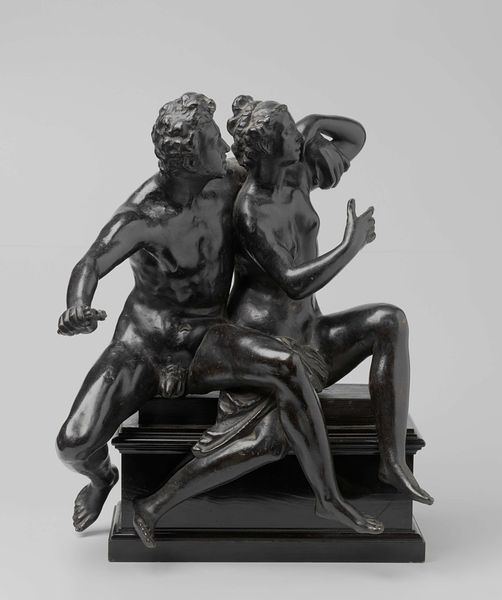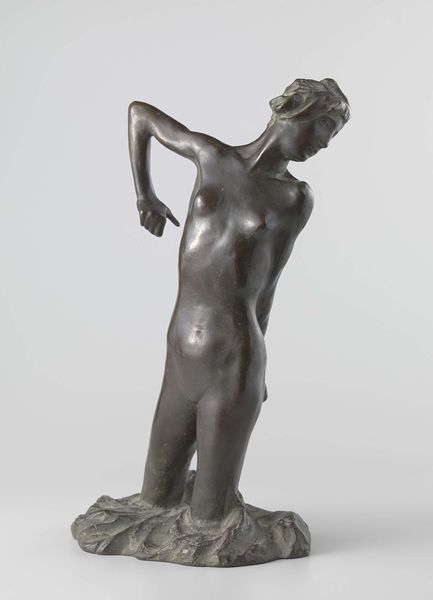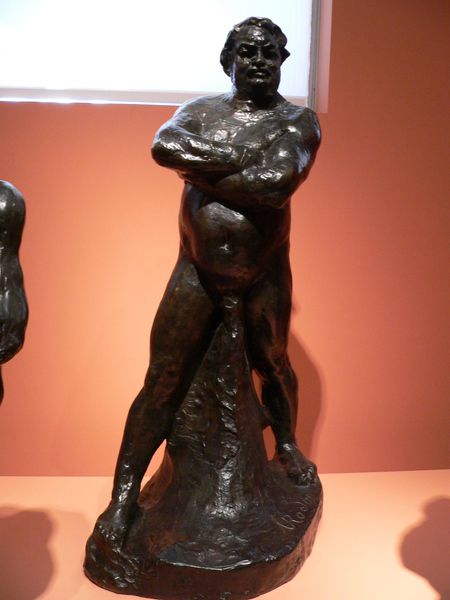
Dimensions: object: 1575 x 1467 x 806 mm, 858.8 kg
Copyright: © ADAGP, Paris and DACS, London 2014 | CC-BY-NC-ND 4.0 DEED, Photo: Tate
Curator: Aristide Maillol’s bronze sculpture, "The Three Nymphs", currently residing at the Tate, immediately strikes me as a study in classical form, reinterpreted through a modern lens. Editor: There's something melancholic about their stillness, though. Almost like they've been caught mid-thought, a secret shared between them. I wonder what it is? Curator: The figures are monumental, yet possess a subtle grace. Note the way Maillol simplifies anatomical details, emphasizing volume and the interplay of light and shadow across the bronze surface. Editor: It feels timeless, doesn’t it? The bronze has such a weight to it. You just know that it will last for centuries. Curator: Absolutely. Maillol aimed to capture the essence of the female form, elevating it beyond mere representation to an archetypal ideal. Editor: Yes, I see it now. It's like he's found a still moment amidst constant change. Such beauty.
Comments
tate 6 months ago
⋮
http://www.tate.org.uk/art/artworks/maillol-the-three-nymphs-n05022
Join the conversation
Join millions of artists and users on Artera today and experience the ultimate creative platform.
tate 6 months ago
⋮
The arrangement of these three nude females recalls the traditional composition of 'The Three Graces'. However, Maillol insisted that they were three nymphs of the 'flowery meadows', and commented that they were too powerful to represent the Graces. His pupil Lucile Passavant, who later became a distinguished sculptor and wood-engraver, posed for the central figure when aged nineteen. Maillol worked on the three figures in plaster between 1931 and 1937. The group was cast in lead in 1938, and the edition size is thought to be six. Maillol preferred the material of lead for this group because he felt that bronze would be too dark in character for the flowery theme. Gallery label, September 2004
